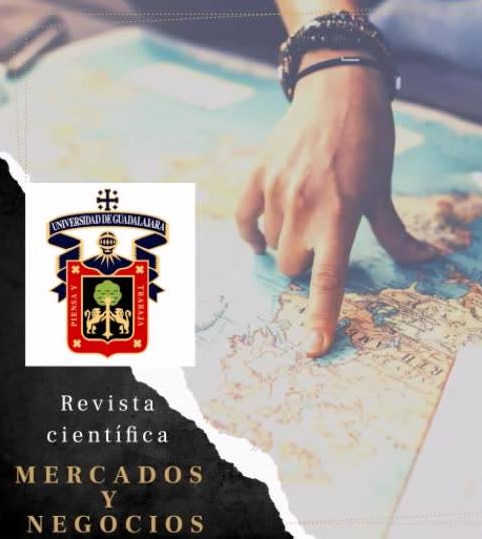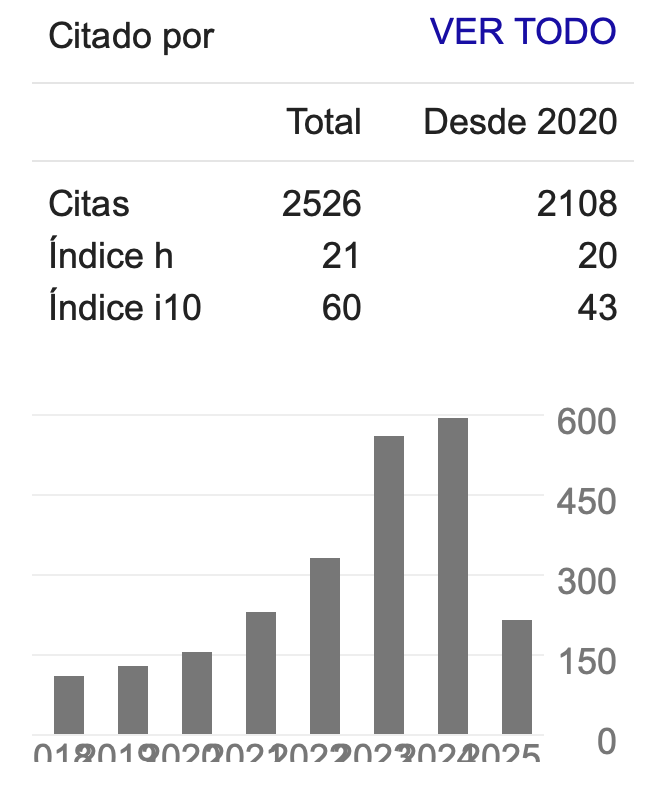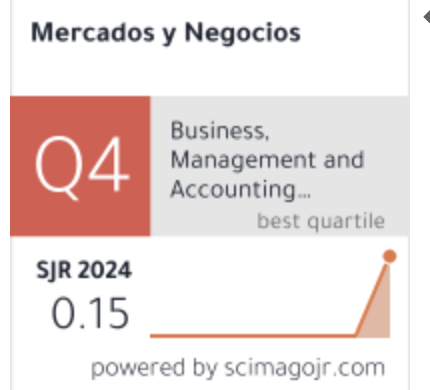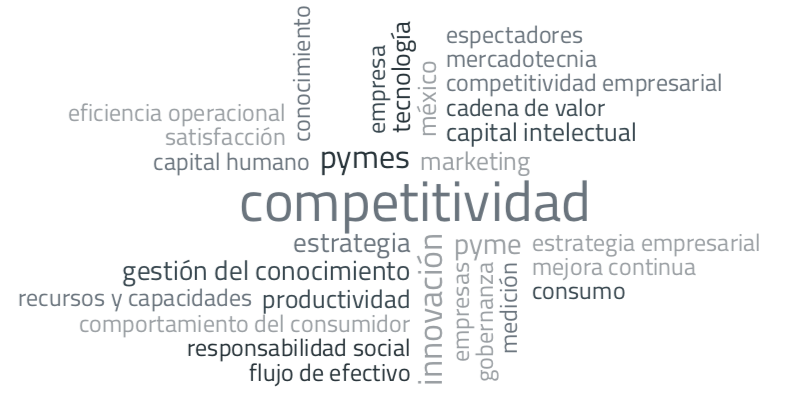El capital humano como factor determinante de la absorción de conocimiento en la industria farmacéutica mexicana
DOI:
https://doi.org/10.32870/myn.v0i25.5174Keywords:
capital humano, industria farmacéutica.Abstract
La capacidad de absorción, entendida como la apropiación de conocimiento externo para mejorar la innovación de las empresas cuando los determinantes internos son favorables, ha cobrado interés en la última década a nivel mundial. El objetivo de la investigación cuantitativa no experimental, transversal, correlacional-causal es evaluar la relación existente entre la capacidad de absorción potencial del conocimiento externo en sus dos dimensiones: adquirida y asimilada, con el capital humano, que es un determinante que la empresa posee. Llegando a la conclusión de que existe una relación positiva y significativa entre el determinante interno capital humano y la capacidad de absorción potencial.References
Afuah, A. D., & Rey, D. (1999). La dinámica de la innovación organizacional: el nuevo concepto para lograr ventajas competitivas y rentabilidad.
Alarcón, V. F., Hiern, J. M., Sallán, J. M., & Torrents, A. S. (2004). The influence of organisational structure on the development of absorptive capacity: A study of two technologically intensive industries. Management & Avenir, (2), 157-168.
Ahuja, G., & Morris Lampert, C. (2001). Entrepreneurship in the large corporation: A longitudinal study of how established firms create breakthrough inventions. Strategic Management Journal, 22(6‐7), 521-543.
Bueno, E., Arrién, M., & Rodríguez, O. (2003). Model for the measurement and management of Intellectual Capital: Intellectus Model. Intellectus Documents,5.
Chesbrough, H. W. (2006). Open innovation: The new imperative for creating and profiting from technology. Harvard Business Press.
Cohen, W. M., & Levinthal, D. A. (1989). Innovation and learning: the two faces of R & D. The economic journal, 99(397), 569-596.
Cohen, W. M., & Levinthal, D. A. (1990). Absorptive capacity: A new perspective on learning and innovation. Administrative science quarterly, 128-152.
Davenport, T. H., De Long, D. W., & Beers, M. C. (1998). Successful knowledge management projects. MIT Sloan Management Review, 39(2), 43.
Dosi, G. (1982). Technological paradigms and technological trajectories: a suggested interpretation of the determinants and directions of technical change. Research policy, 11(3), 147-162.
Drucker, P. F. (1995). The information executives truly need. Harvard business review, 73(1), 54-62.
Drucker, P. F., & Ueda, A. (2002). Escritos fundamentales. nv. 1. pEl individuo(No. 159.923: 65.01). Sudamericana,.
Escribano, A., Fosfuri, A., & Tribo, J. (2005). Managing knowledge spillovers: The impact of absorptive capacity on innovation performance. In 32e Conférence de l’Association européenne de la recherche sur l’industrie et l’économie.
Freeman, C. (1982). The economics of industrial innovation. University of Illinois at Urbana-Champaign's Academy for Entrepreneurial Leadership Historical Research Reference in Entrepreneurship.
Ghoshal, S., & Bartlett, A. (2005). The multinational corporation as an interorganizational network. Sumantra Ghoshal on Management: A Force for Good, Prentice-Hall, London, 71-104.
Gillis, M. (2003). Harnessing new technologies for the 21st century. InProceedings (pp. 63-75).
Griffith, R., Redding, S., & Van Reenen, J. (2004). Mapping the two faces of R&D: Productivity growth in a panel of OECD industries. Review of economics and statistics, 86(4), 883-895.
Grunfeld, L. A. (2004). The multiple faces of R&D: Absorptive capacity effects and different sources of spillovers. Norwegian Institute of International Affairs.
Huselid, M. A. (1995). The impact of human resource management practices on turnover, productivity, and corporate financial performance. Academy of management journal, 38(3), 635-672.
Jones, O., & Craven, M. (2001). Absorptive capacity and new organisational capabilities: a TCS case study.
Kamien, M. I., & Zang, I. (2000). Meet me halfway: research joint ventures and absorptive capacity. International journal of industrial organization, 18(7), 995-1012.
Kneller, R., & Stevens, P. A. (2002). Absorptive capacity and frontier technology. mimeo.
Knudsen, M. P., Dalum, B., & Villumsen, G. (2001, June). Two faces of absorptive capacity creation: Access and utilisation of knowledge. In Nelson and Winter Conference, Aalborg.
Lane, P. J., Koka, B., & Pathak, S. (2002, August). A THEMATIC ANALYSIS AND CRITICAL ASSESSMENT OF ABSORPTIVE CAPACITY RESEARCH. In Academy of Management proceedings (Vol. 2002, No. 1, pp. M1-M6). Academy of Management.
Lane, P. J., & Lubatkin, M. (1998). Relative absorptive capacity and interorganizational learning. Strategic management journal, 19(5), 461-477.
Lenox, M., & King, A. (2004). Prospects for developing absorptive capacity through internal information provision. Strategic Management Journal, 25(4), 331-345.
Liao, J., Welsch, H., & Stoica, M. (2003). Organizational absorptive capacity and responsiveness: an empirical investigation of growth‐oriented SMEs.Entrepreneurship Theory and practice, 28(1), 63-85.
López, N. V., Boluda, I. K., & Manzano, J. A. (2000). Desarrollo y validación de escalas de medida en marketing. Servei de Publicacions. Universitat de València.
Lund Vinding, A. (2006). Absorptive capacity and innovative performance: A human capital approach. Economics of Innovation and New Technology, 15(4-5), 507-517.
Mancusi, M. L. (2004). International Spillovers and Absorptive Capacity: A Cross-Country, Cross-Sector Analysis Based on European Patents and Citations. LSE STICERD Research Paper No. EI35.
Mangematin, V., & Nesta, L. (1999). What kind of knowledge can a firm absorb?. International Journal of Technology Management, 18(3-4), 149-172.
Minbaeva, D. B. (2005). HRM practices and MNC knowledge transfer.Personnel review, 34(1), 125-144.
Mowery, D. C., Oxley, J. E., & Silverman, B. S. (1996). Strategic alliances and interfirm knowledge transfer. Strategic management journal, 17(S2), 77-91.
Murovec, N., & Prodan, I. (2008). The influence of organizational absorptive capacity on product and process innovation. Organizacija, 41(2), 43-49.
Nelson, R., & Winter, S. (1982). An Evolutionary Theory of Economic Change, The Belknap of Harvard University Press, Cambridge Mass.
Nonaka, I., Takeuchi, H., & Kocka, M. H. (1999). La organización creadora de conocimiento: cómo las compañías japonesas crean la dinámica de la innovación (pp. 61-103). México DF: Oxford University Press.
Porter, M. (1990). The Competitive Advantage of Nations.
Rao, H., & Drazin, R. (2002). Overcoming resource constraints on product innovation by recruiting talent from rivals: A study of the mutual fund industry, 1986–1994. Academy of management Journal, 45(3), 491-507.
Rocha, F. (1999). Inter-firm technological cooperation: effects of absorptive capacity, firm-size and specialization. Economics of innovation and new technology, 8(3), 253-271.
Roberto, H. S., Fernández Collado, C., & Baptista Lucio, P. (2003). METODOLOGIA DE LA INVESTIGACIÓN. Editorial McGraw-Hill.
Santos, V., & Cuarón, R. (2009). Industria farmacéutica en México: Retos y oportunidades. El Economista.
Sen, F., & Rubenstein, A. H. (1989). External technology and in-house R&D's facilitative role. Journal of Product Innovation Management, 6(2), 123-138.
Simon, S. J. (2005). Balanced scorecard: A tool to improve IS department planning and evaluation. Journal of Information Technology Case and Application Research, 7(4), 7-29.
Sørensen, J. B., & Stuart, T. E. (2000). Aging, obsolescence, and organizational innovation. Administrative science quarterly, 45(1), 81-112.
Szulanski, G. (1996). Exploring internal stickiness: Impediments to the transfer of best practice within the firm. Strategic management journal, 17(S2), 27-43.
Teece, D. J. (1986). Profiting from technological innovation: Implications for integration, collaboration, licensing and public policy. Research policy, 15(6), 285-305.
Teece, D. J., Pisano, G., & Shuen, A. (1997). Dynamic capabilities and strategic management. Strategic management journal, 509-533.
Teece, D., & Pisano, G. (1994). The dynamic capabilities of firms: an introduction. Industrial and corporate change, 3(3), 537-556.
Van Den Bosch, F. A., Volberda, H. W., & De Boer, M. (1999). Coevolution of firm absorptive capacity and knowledge environment: Organizational forms and combinative capabilities. Organization science, 10(5), 551-568.
Veugelers, R. (1997). Internal R & D expenditures and external technology sourcing. Research policy, 26(3), 303-315.
Zahra, S. A., y George, G. (2002). “Absorptive capacity: A review, re-conceptualization and extension
Downloads
Published
How to Cite
Issue
Section
License
Mercados y Negocios by Department of Mercadotecnia y Negocios Internacionales. University of Guadalajara is licensed under a License Creative Commons Attribution-NonCommercial 4.0 International.
The author retains the copyright.








